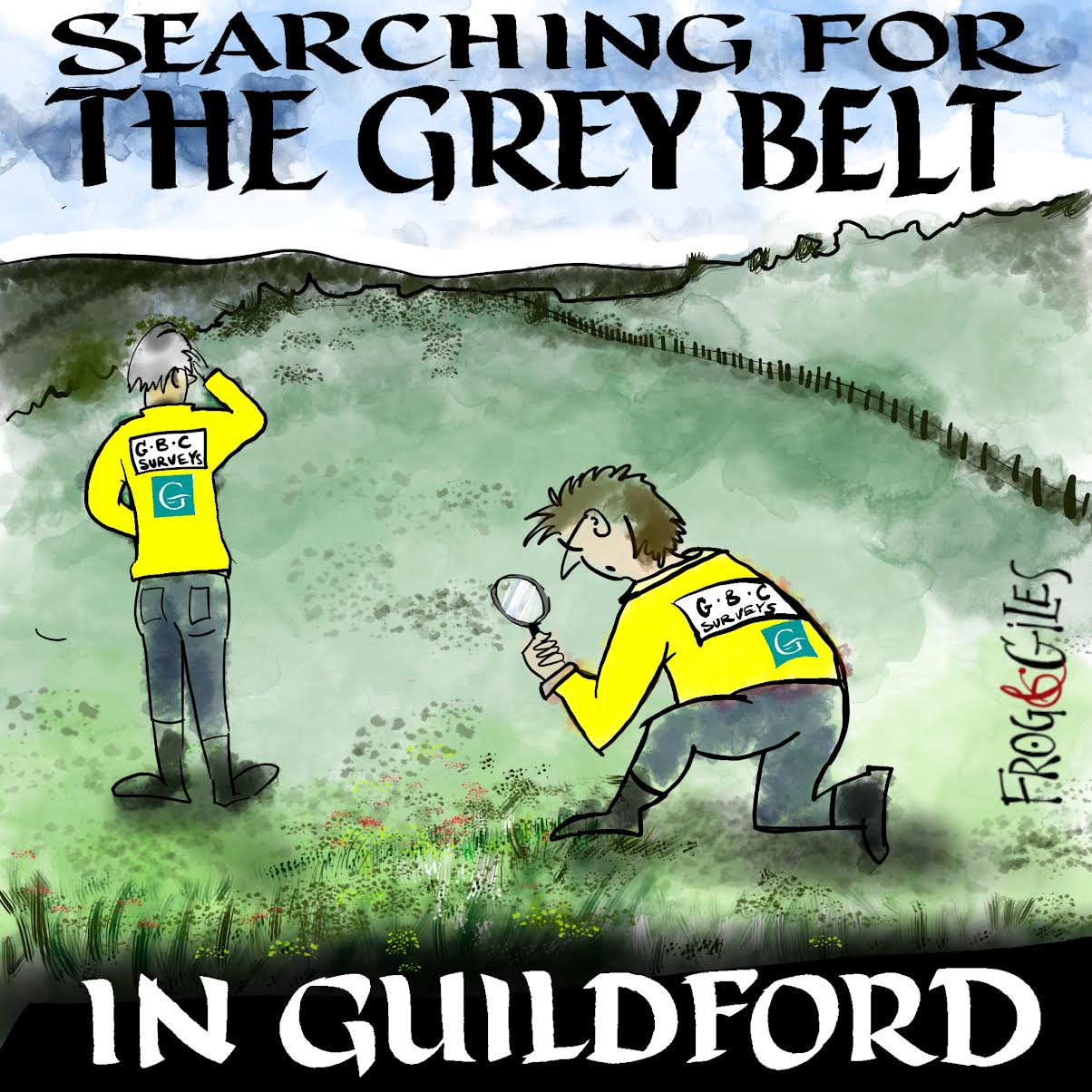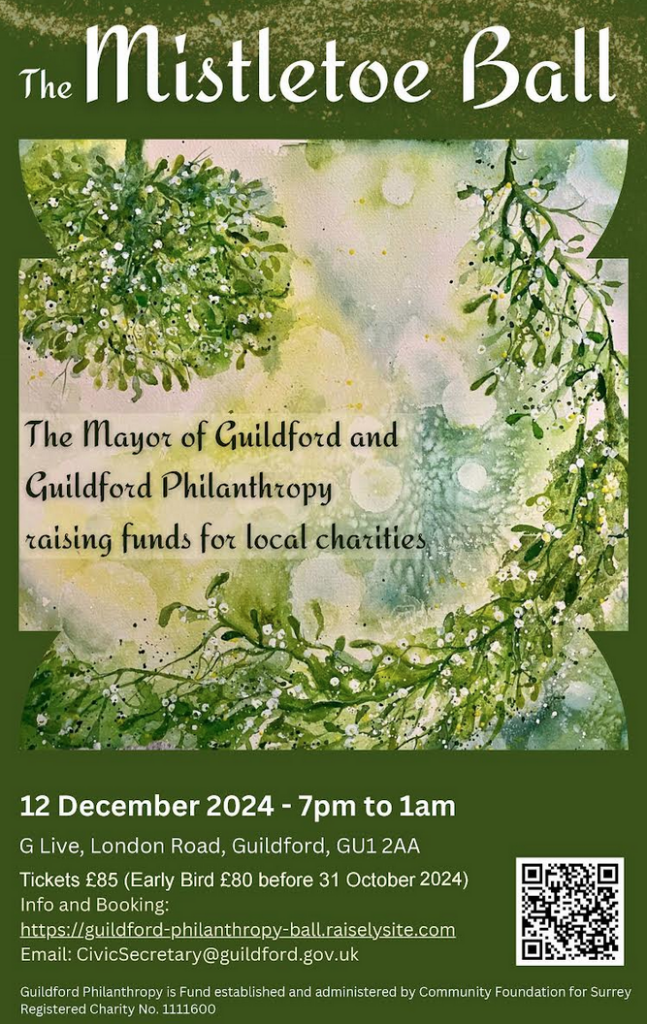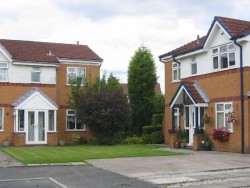 Abraham Lincoln
If given the truth, the people can be depended upon to meet any national crisis...
Abraham Lincoln
If given the truth, the people can be depended upon to meet any national crisis...
 Guildford news...
for Guildford people, brought to you by Guildford reporters - Guildford's own news service
Guildford news...
for Guildford people, brought to you by Guildford reporters - Guildford's own news service
Letter: Building Constraints Are Not the Main Problem
Published on: 8 Jul, 2017
Updated on: 8 Jul, 2017
In response to: Unnecessary Protection Has Hampered Guildford’s House Building
One of Mr Bridger’s repeated themes is that the so-called ‘shortage’ of housing is the result of supply side constraints.
In past letters he has cited high land prices as the explanation. Land prices in towns are indeed high – because the land has development rights and enjoys the proximity of multiple facilities. Land prices in rural areas are not high by these standards. The disparity attracts developers who seek to profit from a once off change of use to make their fortunes.
Mr Bridger considers that the Thames Heath Basin legislation is another unnecessary constraint on housebuilding. The implication of his letter is that all constraints should be removed and that if this were done the housing ‘problem’ would go away.
In fact, the most acute shortage of housing is the shortage of social housing. The fall in house completions can be seen clearly in the statistics. There was once a time when local authorities were responsible for building nearly half the new houses in the country.
Conservative policy stopped local authorities building new houses. In Guildford, for example, no new council houses were built for a period of over twenty years – until very recently. And although the council has resumed house building it still builds fewer houses than it sells off every year.
Are the Thames Heath Basin Special Protection Areas ‘unnecessary’? Yes, strictly speaking they are indeed unnecessary in exactly the same way as wheel-chair accessible buildings are unnecessary. We can do without this legislation because it seeks to protect a minority interest – in this case an interest that does not even have a vote. ‘
Need’ or ‘necessity’ is not the point. What is relevant is the standards and values we wish to live with and by. We don’t need to protect nature – particularly if our time horizon is only a few years.
When the European Powers colonised the world, they did not ‘need’ anyone’s permission to take rubber from the Congo, gold from South Africa, coffee from Brazil. They just helped themselves. Using the same philosophy we could also plunder our natural resources in Surrey. It would cost less money – but ultimately it would exact a greater price.
The Thames Heath Basin Special Protection Areas do not ‘just’ exist to protect a handful of birds. They exist to protect a threatened habitat – that serves a much larger range of wildlife than just the species in the headlines.
Surrey Wildlife Trust describes the Thames Heath lowland heaths as a rarer habitat than rainforest. They are home to large numbers of rare insects, rare amphibians, rare plants, and rare bats – quite apart from the Dartford warbler and nightjars.
When Mr Bridger presents the case as being a matter of a handful of birds versus tens of millions of pounds and a shortage of social housing he puts the matter in its most unfavourable light.
The presentation blatantly exalts the value of human life over that of other living creatures – forgetting that human ‘body’ politick exists exclusively within the natural environment. It is an unashamedly populist argument; it does not inform the public; it exploits its lack of knowledge.
Such a philosophy will make developers rich, will save the council some money in the short-term and in the long run will impoverish us all. It is a philosophy founded on a simple faith in money prices as the ultimate determinant of lasting value. It is a perspective based on a false diagnosis of the underlying problem.
The tide of immigration from all over the world and the printing of huge amounts of money by the banking system are the real causes of high house prices. Removing so called constraints, destroying some rare habitats, and doubling the numbers of executive homes being built (and it is these that the Local Plan facilitates) will not bring down house prices or stem the vast reserves of demand for houses from outside investors.
Responses to Letter: Building Constraints Are Not the Main Problem
Leave a Comment Cancel replyPlease see our comments policy. All comments are moderated and may take time to appear. Full names, or at least initial and surname, must be given.

"Found any?" - "Nope, it all looks green to me!" (See Opinion: The Future is Congested, the Future is Grey)




Recent Articles
- Ash Level Crossing Will Not Close in December, SCC Assures Residents
- Sara Sharif Trial Latest – The Judge Reviews the List of 71 Injuries Found on Sara
- Column: Guildford’s MP Writes – Championing the Needs of Guildford and Our Villages
- City Win at Last With Three Penalties in Cup Tie
- Letter: Development of Gosden Hill Could Be an Opportunity for Improvement
- Ash Level Crossing Row: GBC Rejects Cabinet Member’s Statement As ‘Factually Incorrect’
- Letter: What Will Be Done for Burpham Residents Now?
- County Council Cabinet Confirms Its Decision on London Road Scheme
- Postcode Lottery Police Funding – It ‘Cannot Be Fair’ Says Police Commissioner
- Heartbreak for City Again as Two Extra-time Goals Snatch Victory


Recent Comments
- Warren Gill on Ash Level Crossing Row: GBC Rejects Cabinet Member’s Statement As ‘Factually Incorrect’
- Olly Azad on Heartbreak for City Again as Two Extra-time Goals Snatch Victory
- Brian Holt on Heartbreak for City Again as Two Extra-time Goals Snatch Victory
- Helen Skinner on County Council Cabinet Confirms Its Decision on London Road Scheme
- John Oliver on County Council Cabinet Confirms Its Decision on London Road Scheme
- John Ferns on Ash Level Crossing Row: GBC Rejects Cabinet Member’s Statement As ‘Factually Incorrect’
Search in Site
Media Gallery
Dragon Interview: Local Artist Leaves Her Mark At One of England’s Most Historic Buildings
January 21, 2023 / No Comment / Read MoreDragon Interview: Lib Dem Planning Chair: ‘Current Policy Doesn’t Work for Local People’
January 19, 2023 / No Comment / Read MoreA3 Tunnel in Guildford ‘Necessary’ for New Homes, Says Guildford’s MP
January 10, 2023 / No Comment / Read More‘Madness’ for London Road Scheme to Go Ahead Against ‘Huge Opposition’, Says SCC Leader
January 6, 2023 / No Comment / Read MoreCouncillor’s Son Starts Campaign for More Consultation on North Street Plan
December 30, 2022 / No Comment / Read MoreCounty Council Climbs Down Over London Road Works – Further ‘Engagement’ Period Announced
December 14, 2022 / No Comment / Read MoreDragon Interview: GBC Reaction to the Government’s Expected Decision to Relax Housing Targets
December 7, 2022 / No Comment / Read MoreHow Can Our Town Centre Businesses Recover? Watch the Shop Front Debate
May 18, 2020 / No Comment / Read More







David Roberts
July 11, 2017 at 12:19 pm
Mr Paton’s patient explanation verges on the saintly. Unfortunately, there is a certain generation of politicians who just don’t (can’t, won’t) get it, how ever often or painstakingly it is explained to them. They seem, to quote Wilde, to know the price of everything and the value of nothing.
For heaven’s sake, it doesn’t take a genius to understand that even drab, insignificant things like the Dartford warbler are “marker species” indicating the health of the wider natural environment and therefore the sustainability of our own, human communities. By protecting the countryside we safeguard ourselves from becoming an endangered species.
And surely even Alderman Bridger can see that covering the entire borough in housing estates would have zero impact on the market price of houses. What would ten or twenty thousand new homes in Guildford do? It would take several million new houses to begin to tip the London-led, national supply/demand balance sufficiently to counteract the toxic house price inflation taking place across the South-East.
As Mr Paton says, this is mainly driven by overabundant capital pumped into developers’ pockets through quantitative easing, low interest rates, counterproductive government help-to-buy schemes and tax rules that favour rich overseas buyers, all in the name of “growth” (though immigration levels in general – only a couple of hundred thousand annually across the whole country – cannot be a big driver).
Nationally, we are in a terrible capital market fix and it is naive to think you can just build your way out it.
Jules Cranwell
July 11, 2017 at 9:32 pm
I think we should also be alarmed by the growing trend of councils becoming property speculators (as reported recently in The Times).
GBC is guilty of this and is frankly not competent to make such investment gambles. It is simply playing roulette with taxpayers’ money.
Gordon Bridger
July 12, 2017 at 10:28 pm
If Mr Paton spent less time answering arguments he wrongly attributes to me and reads what I Have written his letters he might be worth answering.
To help him and others I have as footnote to my latter just provided FACTS. See my letter below.
In one sentence GBC is proposing to raise anything between £64m and £94m by a levy on new housings to “improve natural green spaces” to act as magnet for visitors and their dogs from two SPAs to protect a tiny number of birds whose main problem has been bad weather not people. Is this a good idea?
Some facts:
1 The EU gave discretion to governments on how to protect SPAs but we councillors were not told this.
2 The policy is intended to protect birds from people and dogs by attracting them to SANGs.
3 The following are NE nest counts for 2016:
Night Jar Wood lark Dartford Warbler
Whitmoor 2* 0 2
Wisley/Ockham 5 4 7
AshRanges ** 71* 29* 89
* Includes birds outside – SSI
** Military area – NE says fires clearing bush account for increases
4 Funds collected so far by GBC from new housing levies £6m.
5 Funds planned for expenditure in 8 SANGs over 5 years £62m plus interest (correction from my earlier figure of £ 72m – one less SANG), plus funds from new developments if agreed such as Wisley, Gosden and Blackwell – my guess £30m. Total maybe £90m (e.g. Tyting Farm £12.3M- Chantrys £8.7m)
6 This is an 80 year legal commitment
7 A recent NE Evaluation identifies 876 nests in the 11 Districts – about 1 nest per 10 hectares.Internet data for 1998/99 identifies 879 nests.They do not mention people or SANGs – weather is the main problem
8 I have asked NE for total funds raised so far from the 11 Councils but they do not know.
For further explanation ask your councillor.